
Zanzibar, an archipelago off the coast of Tanzania, is a destination that blends history, culture, and natural beauty. Known for its pristine beaches, vibrant spice plantations, and rich cultural heritage, it offers a mix of relaxation and adventure. Whether you’re a nature lover, a history enthusiast, or simply seeking a peaceful retreat, there is something for every traveler.
Here’s the ultimate list of 20 things you can do in Zanzibar:
1. Explore Stone Town
Stone Town, the historic heart of Zanzibar, is a living museum of Swahili, Arab, and European influences. This UNESCO World Heritage site is a maze of winding streets, where traditional stone houses, mosques, and bazaars line the narrow alleyways. As you wander, you’ll pass intricately carved wooden doors, which are a symbol of wealth and status in Swahili culture.
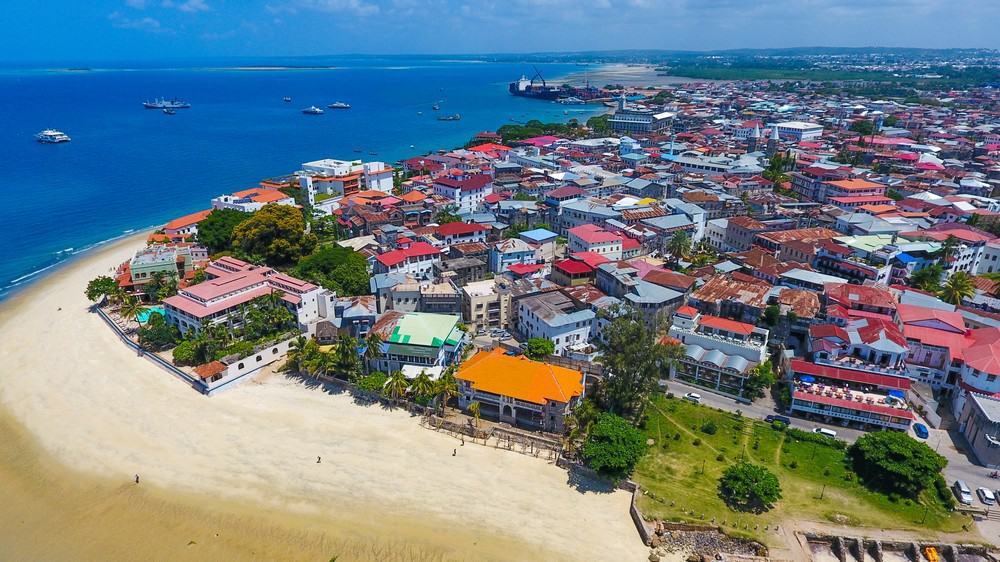
Must-visit landmarks include the House of Wonders, a 19th-century palace that was the first building in East Africa to have electricity, and the Sultan’s Palace, now a museum that offers insight into Zanzibar’s royal history. Another important site is the Old Fort, originally built by the Omanis, which now hosts local art galleries and a small market. A visit to the Anglican Cathedral, built on the site of the former slave market, reveals Zanzibar’s dark past in the slave trade. Here, you can see the underground chambers where slaves were held before being sold.
The rich history of Stone Town is best appreciated with a guided tour, where a local expert can explain the significance of each site. As you explore, be sure to stop by the Darajani Market, a bustling spot where locals shop for fresh produce, spices, and seafood. This is a great place to observe everyday life in Stone Town. The sensory overload of sights, sounds, and smells in this vibrant market will leave a lasting impression. End your visit with a cup of spiced coffee at a local café, soaking in the atmosphere of this historical gem.
2. Relax on Nungwi Beach
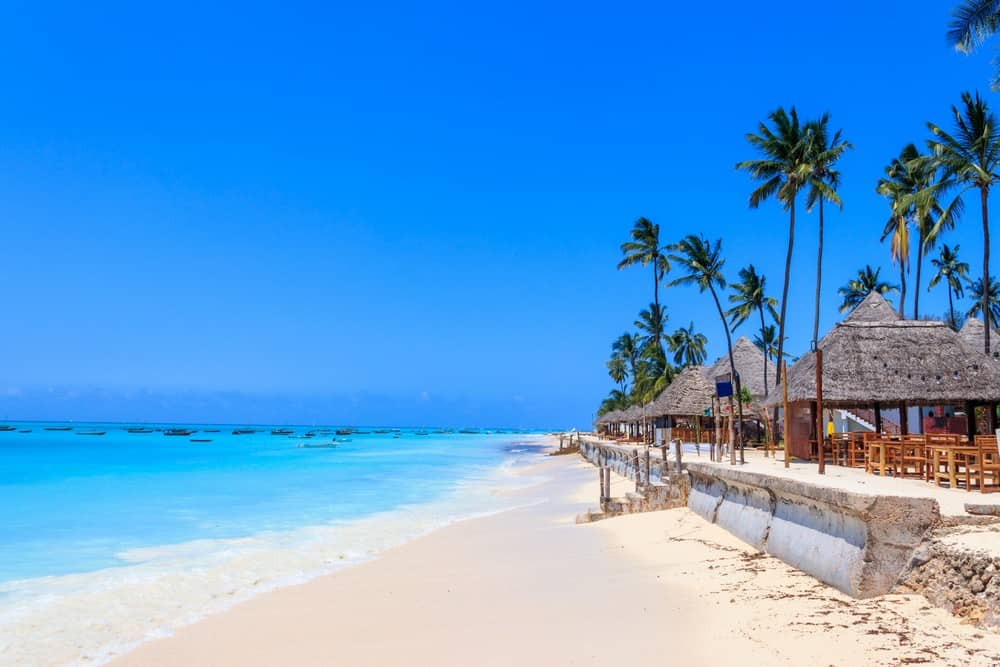
For beach lovers, Nungwi Beach in northern Zanzibar is one of the island’s most beautiful and popular beach destinations. With powdery white sand and crystal-clear turquoise waters, it’s the perfect spot to unwind and enjoy the island’s natural beauty. Unlike other parts of Zanzibar, Nungwi has less tidal variation, meaning you can swim and sunbathe all day without interruption. The beach is lively with a mix of locals and tourists, offering a variety of activities from beach volleyball to water sports. If you’re looking for adventure, you can rent a kayak or paddleboard and explore the waters. Nungwi is also a hotspot for diving, with several dive shops offering excursions to nearby coral reefs.
3. Visit Jozani Forest

The Jozani Forest is a must-visit for nature lovers. It is most famous for being home to the rare Red Colobus Monkey, a species endemic to Zanzibar and easily recognizable by its reddish coat and tufted white hair. These monkeys are remarkably unafraid of humans, making it easy for visitors to observe and photograph them up close. A guided walking tour through the forest will introduce you to the diverse flora and fauna of the area, including the towering mahogany and palm trees that create a lush, shaded canopy. One of the highlights of the Jozani Forest tour is the mangrove swamp walk, where you’ll follow a wooden boardwalk through the tangled roots of these saltwater-tolerant trees.
4. Take a Spice Tour
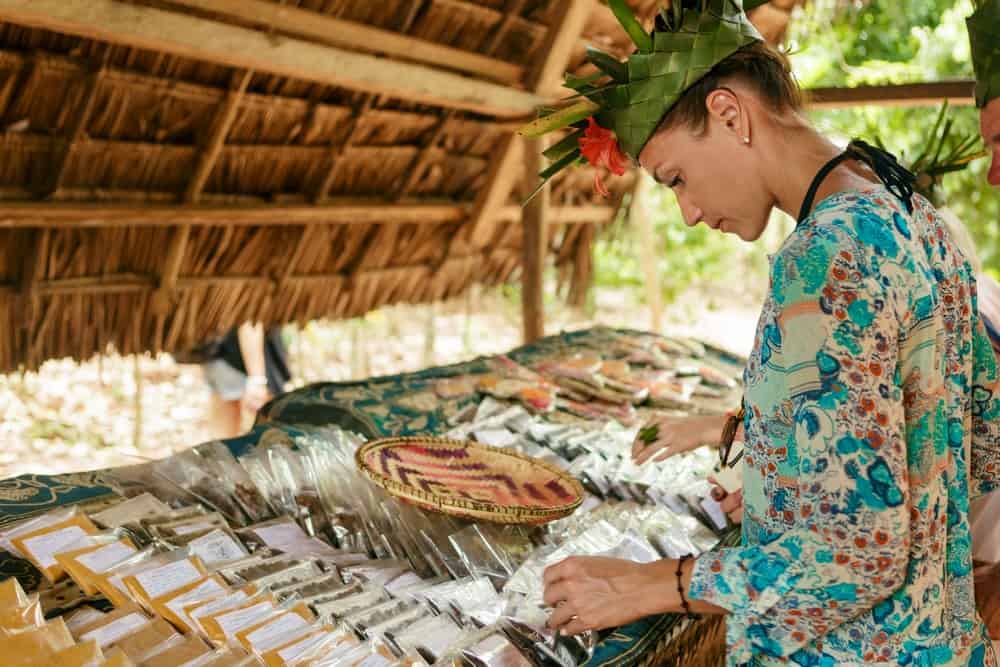
Zanzibar is famously known as the Spice Island, reflecting its long history as a global center for the spice trade. A spice tour offers an immersive experience into this rich heritage, taking you to local farms where spices like cloves, cinnamon, nutmeg, and vanilla are grown. Walking through the spice plantations, your senses will be overwhelmed by the aromas of these exotic plants. The local guides will explain not only the farming process but also the medicinal and culinary uses of each spice. You’ll get to taste fresh spices straight from the trees and bushes, bringing these familiar flavors to life. In addition to spices, many farms also grow tropical fruits like jackfruit, durian, and starfruit, which you’ll have the opportunity to sample as well. The tour usually ends with a visit to a local shop where you can purchase spices to take home.
5. Snorkeling and Diving at Mnemba Atoll
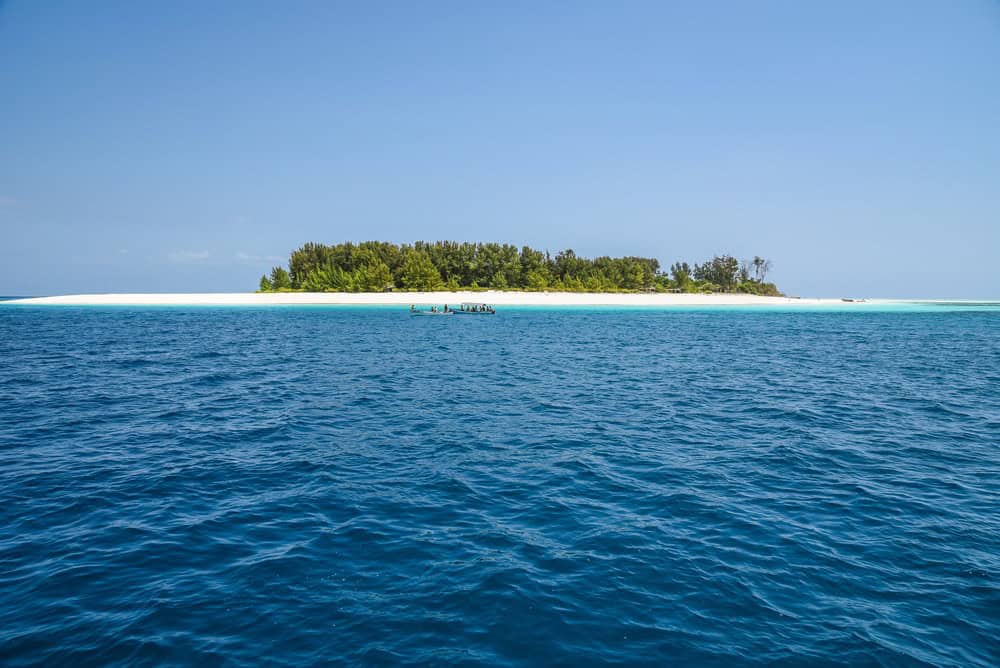
Mnemba Atoll, located off the northeast coast of Zanzibar, is a small, private island surrounded by a protected coral reef ecosystem. It offers some of the best snorkeling and diving in East Africa. The waters are teeming with tropical fish, including clownfish and parrotfish, dolphins, and even large predators like barracudas and reef sharks. Day trips to the atoll are popular among travelers looking to snorkel or wanting a peaceful day on the water. The atoll’s shallow, calm waters make it suitable for both beginners and experienced divers. If you prefer to stay closer to the surface, snorkeling around the coral gardens is equally rewarding, with many fish species swimming just below the surface.
6. Visit Prison Island (Changuu Island)

Prison Island, also known as Changuu Island, is a short boat ride from Stone Town and offers a blend of history and wildlife. Originally used as a detention center for rebellious slaves and later as a quarantine station during a cholera outbreak, the island has a rich and somewhat dark history. You can explore the old prison ruins, which now serve as a museum detailing the island’s history. Today, its primary draw is the colony of giant Aldabra tortoises, some of which are over 100 years old. These gentle giants are descendants of tortoises gifted to Zanzibar from the Seychelles in the late 19th century. Visitors can feed the tortoises and learn about conservation efforts to protect this endangered species.
7. Forodhani Gardens Night Market
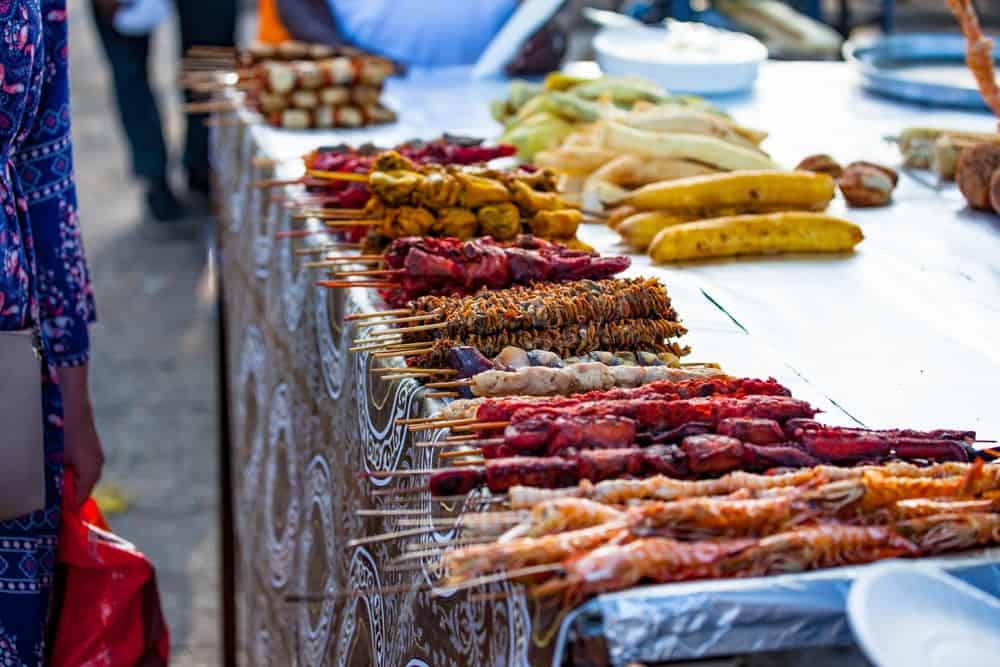
In the heart of Stone Town, the Forodhani Gardens Night Market offers a lively atmosphere where travelers can sample local delicacies. Every evening, the gardens transform into a bustling market where vendors set up stalls to sell an array of delicious Zanzibari dishes. Here, you can sample everything from freshly grilled seafood, including prawns, lobsters, and octopus, to the famous Zanzibar pizza, a unique and tasty street food. In addition to seafood, you’ll find skewers of beef and chicken, samosas, and a variety of vegetarian options. One of the highlights is the freshly pressed sugarcane juice, often mixed with ginger and lime for a refreshing drink. While the market can get crowded, it’s also a fantastic spot for people-watching and soaking up the local vibe.
8. Dhow Sunset Cruise
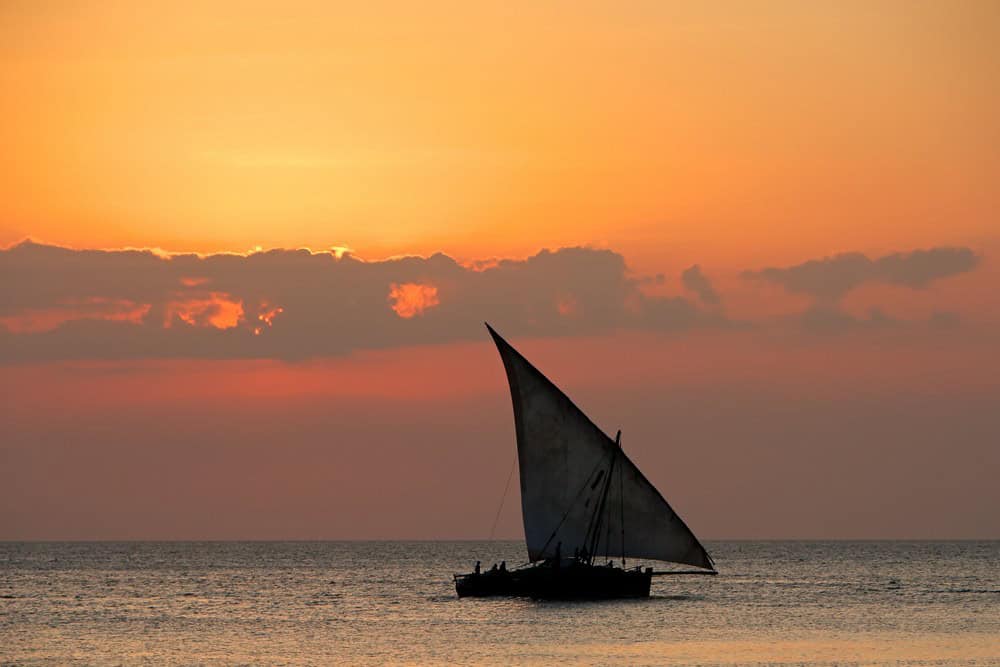
A dhow sunset cruise offers a serene way to end a day in Zanzibar, providing nice views of the island’s coastline and the Indian Ocean. Traditional dhows, with their distinctive triangular sails, have been used by local fishermen for centuries and are an integral part of Zanzibar’s maritime culture. During the cruise, you’ll sail out into the calm waters as the sun begins to set, casting warm hues across the sky and sea. This is especially popular with couples and honeymooners looking for a romantic outing. However, it’s equally enjoyable for families and solo travelers seeking a peaceful escape from the day’s activities.
9. Swim with Dolphins at Kizimkazi
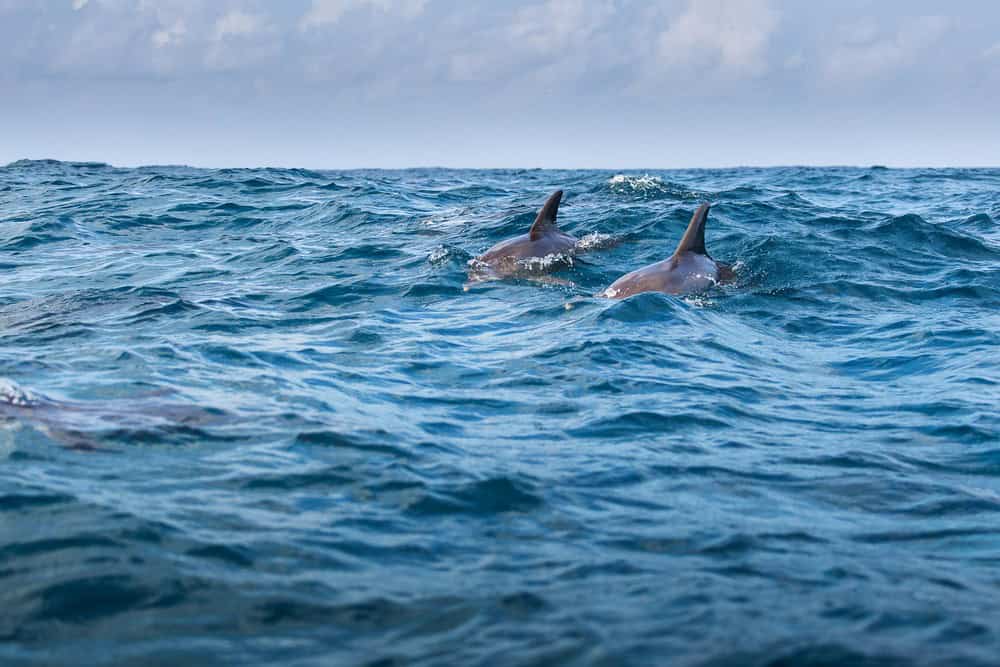
Kizimkazi, located on Zanzibar’s southern coast, is renowned for its dolphin safaris, offering visitors the chance to swim alongside these playful marine mammals. Early morning boat trips are the best time to spot bottlenose and humpback dolphins as they come closer to shore to feed. Watching these dolphins in their natural habitat is thrilling, and with a bit of luck, you may get the chance to slip into the water and swim near them. While sightings are common, it’s important to choose operators that practice responsible tourism, ensuring that interactions are respectful and do not stress the dolphins. Guides will brief you on the best ways to observe the dolphins without disturbing them.
10. Explore Zanzibar Butterfly Centre

The Zanzibar Butterfly Centre is a fun, yet education, place for visitors of all ages. It is one of Africa’s largest butterfly enclosures, home to hundreds of butterflies native to the island. As you walk through the tropical garden, you’ll witness the entire life cycle of these delicate creatures, from caterpillars to fully-grown butterflies. The center’s guides are knowledgeable and passionate, providing insights into the various species and their characteristics. This is an excellent activity for families, as children will enjoy the hands-on experience of seeing butterflies up close. In addition to butterflies, the center is a haven for other insects and small animals.
11. Kite Surfing at Paje Beach
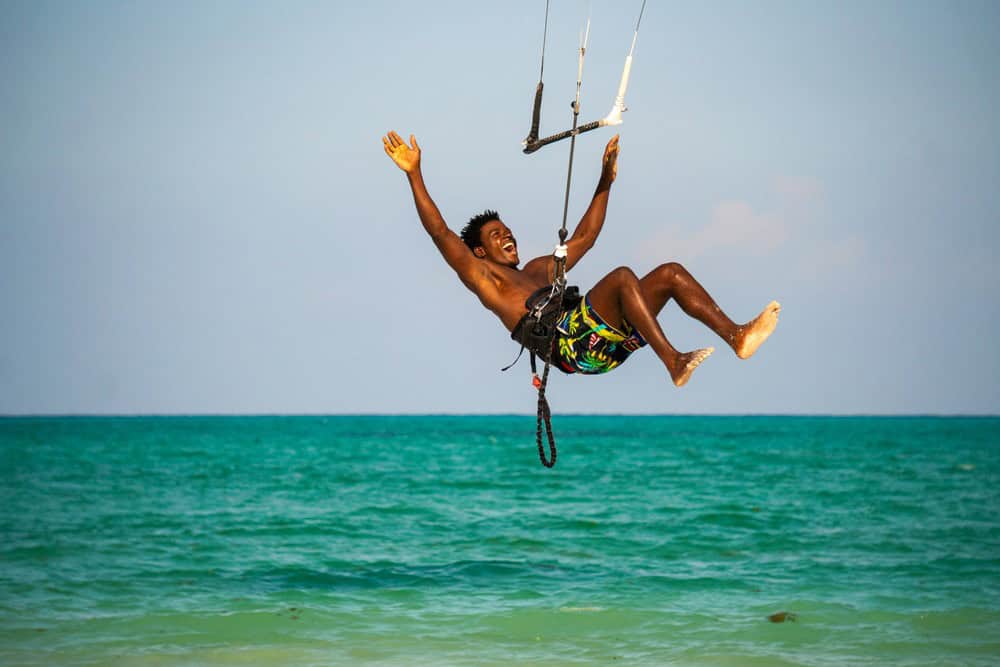
Paje Beach, on the southeast coast of Zanzibar, is the place for kite surfers, known for its consistent winds and wide, shallow lagoon. The conditions here are ideal for both beginners and advanced kite surfers, with reliable trade winds blowing from June to October and December to March. Several kite surfing schools along the beach offer lessons, equipment rental, and courses ranging from beginner to advanced levels. Experienced instructors ensure that even novices can safely enjoy the thrill of gliding over the turquoise waters. For those already skilled in kite surfing, Paje offers a range of challenges, from freestyle tricks to long downwinders. The beach itself is stunning, with soft, white sand and a backdrop of swaying palm trees, making it a perfect spot to relax when you’re not on the water.
12. Visit the Anglican Cathedral and Former Slave Market
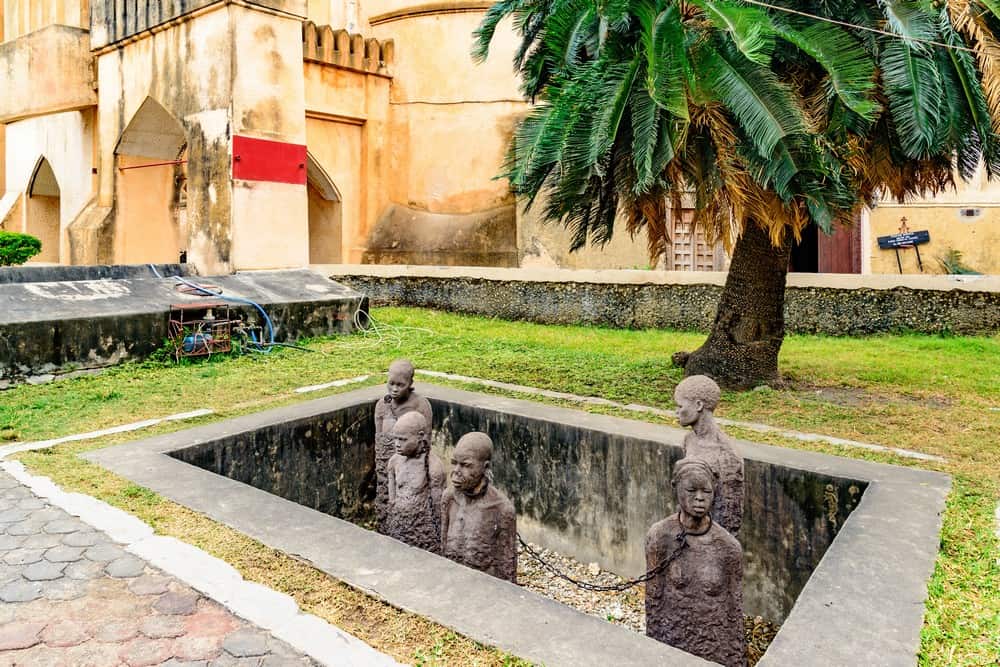
The Anglican Cathedral in Stone Town stands as a powerful reminder of Zanzibar’s history in the East African slave trade. Built on the site of the former slave market, the cathedral was constructed in the 1870s after the abolition of slavery, symbolizing hope and reconciliation. Inside, visitors can see the crucifix made from the wood of the tree under which Dr. David Livingstone’s heart is buried, honoring his efforts to end the slave trade. The site also includes a small museum that provides detailed information about the history of slavery in Zanzibar and the wider region. Below the cathedral, the original slave chambers can still be visited, offering a sobering look into the conditions slaves endured.
13. Take a Local Food Tour

Zanzibari’s food is a flavorful fusion of African, Arab, Indian, and European cuisine. A local food tour offers a culinary adventure on every corner, from street food stalls to high-end restaurants. A must-try dish is Zanzibar pizza, a savory or sweet stuffed flatbread cooked on a hot griddle, available at night markets like Forodhani Gardens. Octopus curry is another local favorite, prepared with coconut milk and a blend of spices, offering a taste of the island’s coastal bounty. For a true taste of Swahili cuisine, try pilau rice, often served with grilled fish or chicken. Fresh tropical fruits like mangoes, pineapples, and jackfruit are abundant, and you can wash it all down with sugarcane juice or spiced tea.
14. Sail to Sandbanks for a Private Picnic
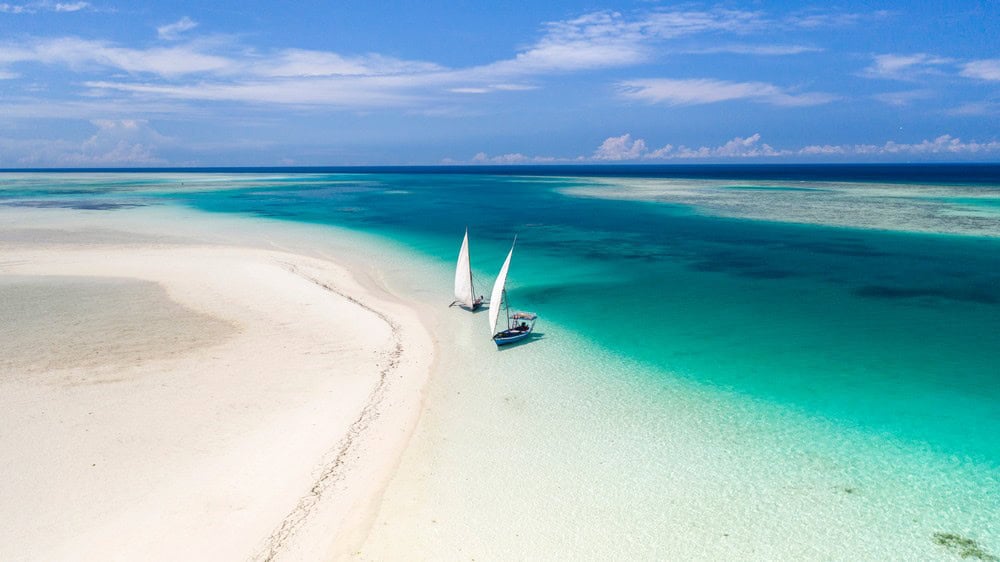
A sandbank picnic offers tranquility. Boats sail to small, remote sandbanks off Zanzibar’s coast, where travelers can enjoy snorkeling and picnicking in complete solitude. Most sandbank trips include a traditional dhow boat ride, during which you can relax and enjoy the ocean breeze as you sail towards your private destination. Once you arrive, you can snorkel in the surrounding coral reefs, where vibrant marine life awaits. After exploring the underwater world, you’ll be treated to a beach picnic, often featuring freshly grilled seafood, tropical fruits, and refreshing drinks. The sandbanks provide a perfect backdrop for relaxation, whether you’re lounging in the sun, swimming in the warm waters, or simply taking in the stunning views.
15. Visit Mtoni Palace Ruins
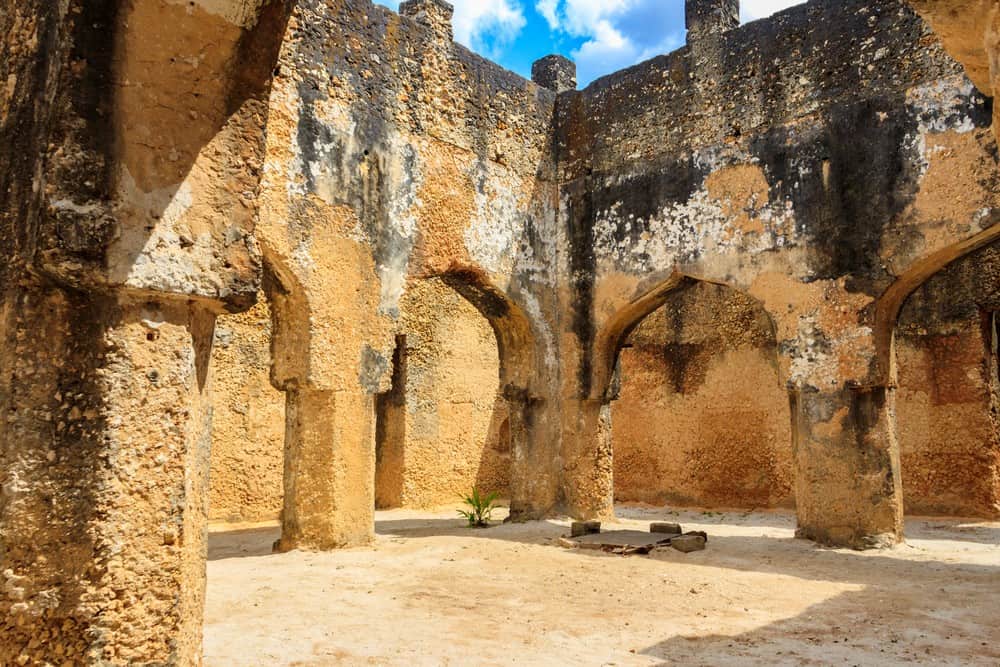
The Mtoni Palace Ruins offer a glimpse into Zanzibar’s royal past. Built in the early 19th century, this palace was once the grand residence of Sultan Said and the birthplace of his daughter, Princess Salme. Today, the palace stands in ruins, yet it still exudes an aura of past grandeur, with remnants of Persian baths, arched doorways, and sprawling courtyards. Guided tours are available and provide insights into the daily life of the Zanzibari royal family and the architectural factors that shaped the palace. Visitors can also enjoy cultural performances and traditional Zanzibari music on select evenings.
16. Take a Cooking Class
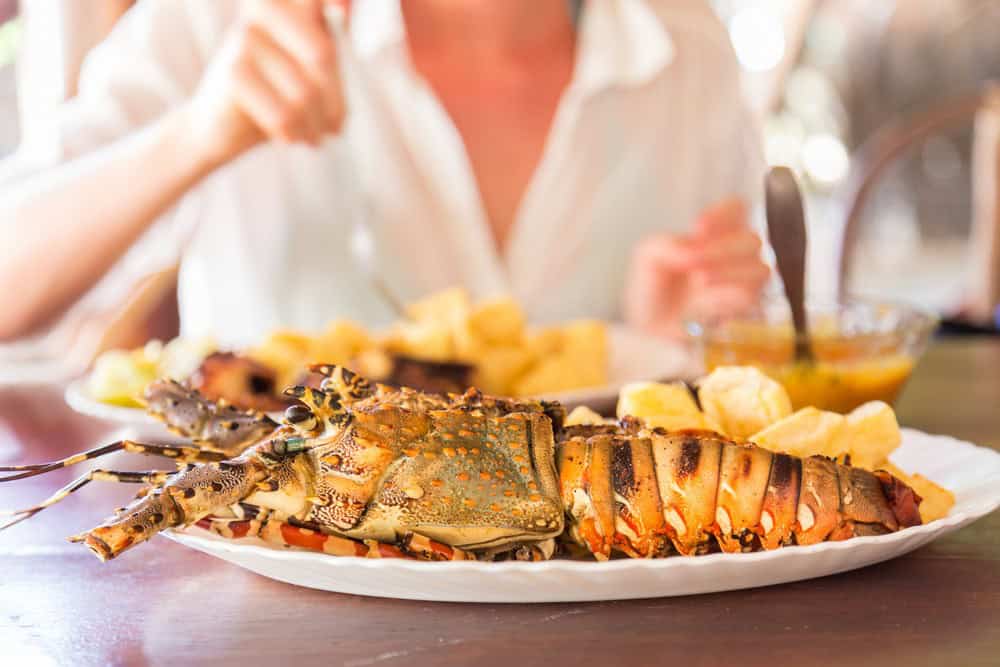
Partake in a hands-on cooking class and indulge in Zanzibar’s rich culinary traditions. The experience typically begins with a guided walk through a local spice plantation. After the tour, you’ll head to an open-air kitchen where a local chef will guide you through the preparation of traditional Zanzibari dishes. You’ll learn how to make flavorful curries, aromatic rice dishes, and spicy seafood specialties. The cooking class is interactive, giving you the opportunity to chop, stir, and season each dish while learning the secrets behind Zanzibar’s flavors. Once the cooking is complete, you’ll sit down to enjoy the meal you’ve prepared.
17. Visit the House of Wonders
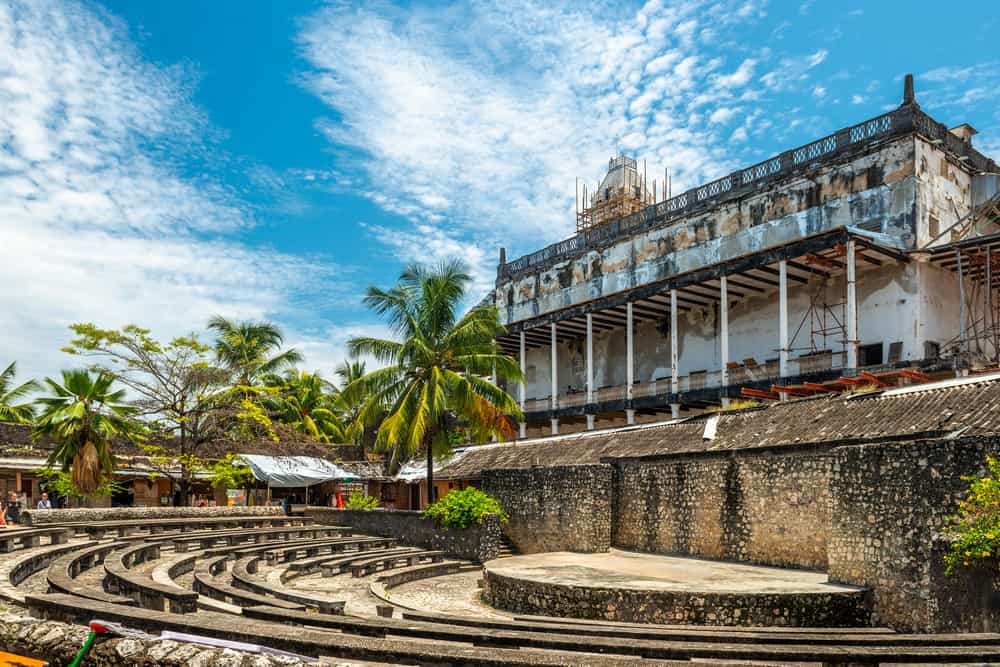
The House of Wonders, also known as Beit-al-Ajaib, is one of Stone Town’s most iconic landmarks. Built in 1883 by Sultan Barghash, it was the first building in East Africa to have electricity and an elevator, hence its name. The architecture of the House of Wonders features grandiose columns, wide verandas, and intricately carved wooden doors. Inside, the building houses a museum showcasing artifacts related to Swahili culture, maritime history, and the island’s role in the spice trade.
18. Visit Jambiani Village
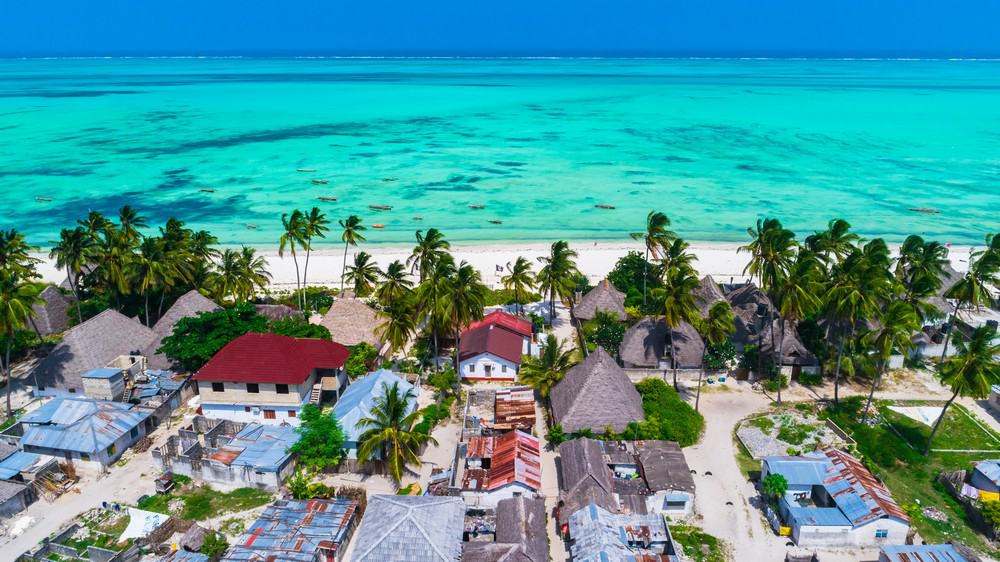
For travelers interested in local culture, a visit to Jambiani Village provides an authentic experience. Unlike the more tourist-centric areas, Jambiani retains a slower pace of life, where you can observe and participate in local customs. The village is known for its traditional crafts, and you might have the opportunity to learn about basket weaving, pottery, or mat-making from local artisans. Guided tours often start with a walk through the narrow streets, where you’ll see houses made from coral stone and palm thatch. You’ll have the chance to visit seaweed farms, where local women cultivate seaweed, an important source of income for the community. As you walk along the beach, you’ll see fishermen heading out to sea in their dhows, practicing techniques that have been passed down through generations.
19. Explore Makunduchi Coral Caves

The Makunduchi Coral Caves offer an adventure off the beaten path. Located in the southeastern part of the island, these ancient limestone caves are filled with intriguing formations, including stalactites, stalagmites, and underground pools. The caves have cultural and historical significance, as they were used by local communities for spiritual rituals and as a source of fresh water during times of drought. Guided tours explain the cultural and historical significance of the caves.
20. Quad Biking Adventure

For a thrilling adventure, try a quad biking tour through Zanzibar’s rural areas. These guided tours take you off the usual tourist routes, through dirt tracks and narrow village roads. You may visit remote beaches, hidden caves, or scenic viewpoints that are inaccessible by car. Many tours include stops at traditional Swahili villages, where you can interact with locals and learn about their customs and way of life. This activity is perfect for adventurous travelers and families seeking an action-packed day.




























































